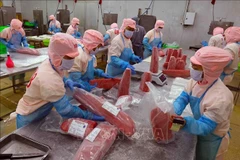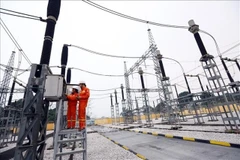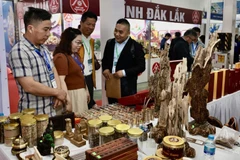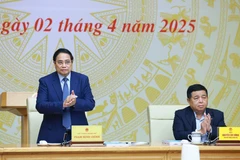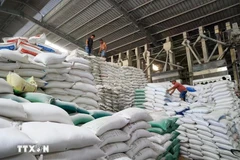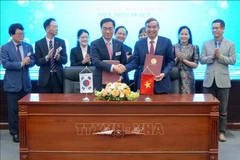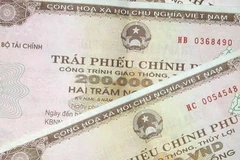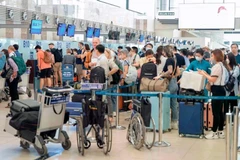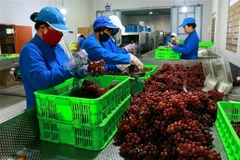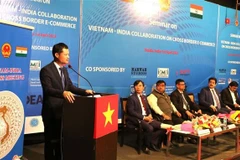In 2014, Vietnam's exportactivities have focused on manufactured goods accounting for 73percent of the total export volume, followed by agricultural (15percent) and mineral exports (6 percent).
Exportgrowth helped stimulate GDP growth, create jobs and reduce inventories.These results have reflected that the Government’s export strategy is onthe right track.
It has helped curbing tradedeficit as Vietnam continued to maintain a trade surplus in 2014,projected at 1.5 billion USD.
In recent years, foreign-investedenterprises have made significant contributions to economic and exportgrowth. In 2014, this sector remains a key player in export value andgrowth.
Revenue from foreign companies was estimatedat 101.8 billion USD in 2014, up 15.4 percent over the previous yearand accounting for more than two thirds of the country’s total earnings.
Main export products have included phones, computers, electronic devices, and cameras, among other things.
VietnameseGovernment regards foreign direct investment (FDI) as an importantsource to drive economic development. The Government and relevantministries have introduced many measures to attract, manage andstreamline FDI. Vietnam has prioritised FDI projects which arehigh-tech, environmentally friendly products.
Recently enterprises have taken advantage of multilateral and bilateraleconomic integration opportunities to boost export growth. The totalexport value of goods with a certificate of origin is on the rise,reaching 19.3 billion USD in the first nine months of 2014, ayear-on-year rise of 94 percent.
Vietnam is activelynegotiating the Trans-Pacific Partnership (TPP), an FTA with the EU andthe European Free Trade Association (FTA), which comprises Norway ,Iceland , Switzerland and Liechtenstein . The country has alsorecently concluded negotiations of trade deals with the Republic ofKorea and the Customs Union of Russia, Belarus and Kazakhstan .
These trade pacts are expected to bring about manyopportunities for Vietnamese exports, creating a foundation for thedomestic manufacturing sector to join global supply chains.
A number of Vietnam ’s major exports such as garments, footwear,seafood and agricultural produce are still being levied high tax in somemajor markets.
However, the question is howenterprises can take advantage of these FTAs to boost exports and expandtheir market. Currently there are enterprises that do not pay enoughattention to tariff preferences. The Ministry of Industry and Trade(MOIT) should help businesses fully understand FTAs’ content so thatenterprises can fully take advantage of those FTAs. The MOIT should alsoco-ordinate with relevant ministries and agencies to work out measuresto attract investment in export supply chains in order to increase thelocalisation rate and value for export products.
However, rawmaterial issue are a key problem for manufacturing goods for exports asthe country has relied heavily on imported raw materials. The countryis also expected to face more anti-dumping lawsuits and increasedcompetition in the global market.
In order to achieve the2015 export target of more than 160 billion USD, up 10 percent against2013, the Ministry of Industry and Trade and relevant ministries andagencies should focus on measures to support enterprises, removedifficulties for farmers and encourage foreign companies to invest inhigh-tech and environmentally friendly projects.
They should also work together to increase trade promotion activities,help the business community to take advantage of free trade agreements,timely provide market forecasts and up-to-date information on exportmarkets while further simplifying administrative measures to reducecustoms costs and clearance time.-VNA





